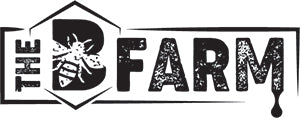The story of how European honey bees made their way to the Americas is a tale of ecological expansion that intertwines with the history of colonization and agriculture in the New World. The odyssey of these industrious insects offers a unique glimpse into the past and an understanding of their impact on our present and future ecosystems. But how in the world did the honey bee get to the U.S. and eventually South and Central America? We’re just as curious to unearth how European honey bees ended up in America. Read on to discover their incredible story!
A Transatlantic Voyage
European settlers sailed the ocean blue in 1622, seeking to cultivate the rich, unknown lands of the Americas. However, they didn’t travel alone. They brought one of agriculture’s smallest yet most vital workers with them: The honey bee (Apis mellifera). These bees were never native to North, Central, or South America. They originated in Europe, and their introduction marked the beginning of a significant chapter in agricultural history.
Interestingly, the first town in the U.S. to operate a town apiary was Danvers, Massachusetts. This initiative helped modernize early North American societies by having honey bees pollinate and produce honey. While the Massachusetts colony was the second to receive honeybees, their presence soon became widespread, becoming a big part of crop yielding.
Spreading Their Wings Across the Continents
North America wasn’t the only place where settlers introduced European honeybees. Central and South America also saw the induction of these bees, where they adapted and contributed to their new environments’ biodiversity. Yet, the bees didn’t show up by chance—the Spanish and Portuguese settlers brought them because they knew how useful they were for crop pollination.
Because they could quickly adapt to North America’s diverse climates—from the temperate to the tropical—their role in crop pollination enhanced the native plants’ productivity. This symbiotic relationship between bees and flora has been a crucial factor in the sustainability and growth of agricultural practices throughout the Americas.
The Legacy Continues
Today, the descendants of those first European honey bees continue to play an indispensable role in our global agricultural industry and the environment. Crop cultivation relies heavily on honey bee pollination. Their work improves crop health and ensures farmers and agricultural businesses survive and thrive.
Despite facing challenges, such as habitat loss, pesticides, and diseases, the honey bees’ resilience remains evident. Still, our efforts to protect and preserve these vital pollinators are more important than ever.
Join the Legacy
European honey bees have made quite the trip from Spain and Portugal to the Americas, proving they’re superstars in both past and present agricultural practices. Therefore, keeping them safe from changing environments is crucial.
Choose to lead the legacy of raising bees by purchasing pol-line bees for sale from The B Farm. You become part of a community dedicated to preserving and promoting healthy bee populations when you do. Learn more about how European honey bees ended up in America and continue their ongoing legacy by visiting our website.
